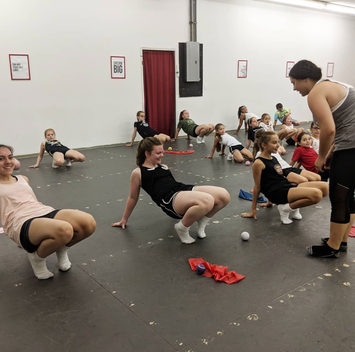 Part 1 Interested in trying out Irish dance, but aren’t entirely sure? We could talk all day long about the benefits Irish dance has, physically, mentally, and socially (and we have—check out these posts to learn more!) but why don’t we let some of our dancers tell you a little more about why they love Irish dance here at SRL! We hope you’ll join us! Looking for: exercise? “I love all kinds of dance but Irish dance is a fun fast kind of dancing!”—Rooney Looking for: long-lasting life skills? “As an adult, my time at SRL taught me the value of time management, passion and persistence. Until college, I was a multi-sport athlete, competitive dancer and a participant in various other extracurricular activities. I learned quickly how to manage my school load with these other commitments to keep everything in balance. I hold myself to a high standard to do everything the best I can, so being able to manage that while maintaining a passion for the sport taught me so much. Today, I approach everything I do with passion and persistence while remembering I have to manage my time well to accomplish all of my goals.”—Tara 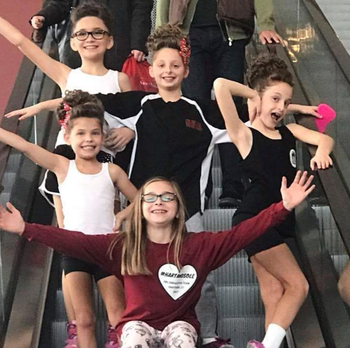 Looking for: enjoyment and self-expression? “I believe there are many reasons behind why people dance, including because friends or family members did it in the past or currently do it now. But I think that some people dance for the same reason I did: for a way to escape reality from time to time. I remember going to the studio, totally forgetting about the outside world, and just living in the moment that was happening throughout dance class.”—Christian Looking for: cultural enrichment? “I think people dance because it is freeing. In Irish Dance, it is you and the floor working in harmony to produce something beautiful and culturally significant. It is a personal challenge…where the only opponent is yourself. It is also an opportunity to celebrate a culture very few understand. To represent and celebrate my Irish heritage through dance has connected me more with my family’s ancestry.”—Tara Looking for: a supportive environment? “SRL is an amazing community where all the dancers and teachers are very motivating, inspiring, and caring.”—Bailey 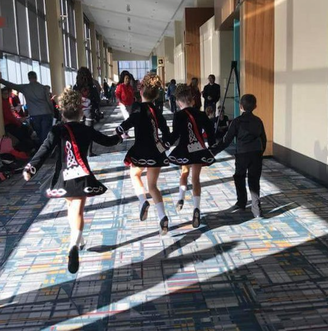 Looking for: friends? “SRL has provided me with so many opportunities and memories that will last a lifetime.”—Lindsey Looking for: peer mentors? “I always loved my time as an assistant teacher for Courtney and still keep in contact with some of my students today. When they finally got their jumps or skips, it was such a proud moment for me. I miss working with them!”—Tara Looking for: something to be passionate about? Just take Colby’s word for it when asked what he loves most about Irish dance: “Everything.” If your dancer is looking for it, SRL has it! While classes run on a school year schedule from September to June, we have a special offer to let new dancers get a taste before they sign up in the fall! SRL’s Intro to Irish Dance Summer Camp sign-ups are now open for new dancers 2-12, with two sessions available at work-friendly drop off times for parents. Learn more about the program here, or feel free to reach out to our Office Manager, Devon, at 860-385-1107 or shoot her an email at [email protected]. She’s happy to help! This post is part of a series. Take a look at our last 411 post—tons of testimonials from parents!— here. Also: check out the blog every Monday and Thursday for more posts about Irish history, dance culture, community news, and spotlights on our dancers, staff, and families—among other fun projects! And don’t forget to dance along with us on both Facebook and Instagram
0 Comments
Dance in Irish Mythology, Part 3 The Crane Dance Like any founding mythology of a nation, the Irish mythos is littered with heroes and their glorious deeds—but not many of those stories involve dance. One major exception is the god-hero Lugh (we’ll be discussing the festival in his honor next week!) But before we get into the dancing, we have to tell you a little more about his place as one of the most important heroes in the Irish mythos. First off—it’s unclear if Lugh was a god or an actual, historical figure. On his god side, Lugh was known as one of the strongest members of the powerful Tuatha Dé Danann: the god of sun and light, an all-seeing and all-knowing deity also associated with poetry, arts, and crafts. While the Romans referred to him as the “Gaulish Mercury”—he’s more like Apollo combined with Hermes, with a dash of Hercules thrown in. His many talents are attributed to being the only surviving member of a set of triplets—he’s often depicted with three faces to represent how he has the power of three (an important number in most mythologies and religions.) On the historical side, Lugh is associated with being not just a mighty warrior, but a skilled one, as well as a symbol of rightful kingship—meaning peace, prosperity, law and order, and oaths and truth. It’s a lot of for one man (or god) to carry! There are many stories we could tell about Lugh (and probably will in future posts!), but the one that concerns us today is a rite Lugh was recorded performing before he led his men into a fight with the Fomorians (a monstrous, supernatural race from the sea.) While he heats the warriors’ blood with a rhythmic, rousing speech, he…dances. Specifically, he hops to the beat of his chant in a circle on one foot, with one eye closed—and bizarre as this seems out of context, there is an explanation! This is one of the only mentions in Irish mythology of a specific dance being performed by a god, and fitting with his status as a divinity, research shows that he was performing an ancient, Druidic magic called corrghuineacht aka “the crane dance.” The position Lugh assumes is known as glám dícenn (“satire which destroys,” fitting for this poet-warrior,) and does more than mimic a crane standing in water. Lifting one foot from the ground is meant to place the dancer between worlds, while only one eye is open to block this world and see into the Otherworld. Traveling in a sunwise circle for prayer, blessing, and curses (Lugh, in this instance, is blessing the fighters,) was a common practice in Druidic worship, with infinity figures (circles and knots, foremost,) being the most iconic of Celtic symbols to this day. But the crane was also an important symbol in Celtic mythology: its ability to move between water, land, and air made it a symbol of shapeshifting and magic, as well as the moon to Lugh’s sun—a mirror of his prophetic powers and sacred to the triple goddesses of Irish mythology. What does this all mean? On one level, it’s a really a beautiful way to view dance and emphasizes the deep, cultural roots of Irish dance in particular: dance in Ireland is something powerful, perhaps even magical, transformative, and of the natural world, tied to the land, the water, and the air of the isle. Lugh performing this dance is of particular significance as his rule as King marked 40 years of peace and prosperity on Irish land where the harvests were abundant and the cows productive—it associates dance with protection of the land and people, something steadfast, comforting, and elucidating in the face of the many invaders over Ireland’s long and often bloody history. Beauty in the midst of chaos—how else could you describe those flying feet paired with perfect posture?
Fun fact: there haven’t been cranes in Ireland for at least three centuries…but a nesting pair was spotted just this year! Up until medieval times, cranes were reportedly the third most common domestic pet in Ireland (after dogs and cats,) usually tamed and kept in the home, near the dinner table. (There are even claims that they were able to be trained to bow their heads in prayer!) Archaeologists also report that crane bones are the fourth most common bird bone found in Ireland, and scholars note that the birds are the second most common in place names throughout the British Isles. Industrialization led to the shrinking of their habitat and many thought the birds had moved on for good, but Irish company Bord na Móna has pivoted their purpose as peat harvesters and committed themselves to restoring the wetlands they had previously devastated. The company was proud to report the pair this past May—and while none of their eggs hatched this year, there’s high hopes for the next! But there’s more about Lugh (and less about birds) to come…check out our post next week all about the holiday named after this multifaceted god! This post is part of a series. Take a look at our last Irish Mythology post, all about the “King of the Faeries,” here. Also: check out the blog every Monday and Thursday for more posts about Irish history, dance culture, community news, and spotlights on our dancers, staff, and families—among other fun projects! And don’t forget to dance along with us on both Facebook and Instagram. 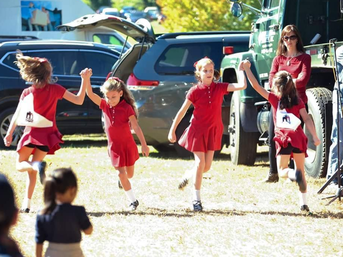 Part 1 Is your child interested in dance, but you’re not sure where to start? Why not Irish dance? We won’t try to convince you (check out these multiple posts in case you want some more convincing—we do have a strong case,) but thought we’d let our amazing community of parents tell you why SRL is the right choice, instead! Looking for: exercise with purpose? “It’s been great for working on his balance as well as giving him a way to learn something fun that he enjoys.”—Michaela Looking for: a confidence boost? “[Irish dance has given my dancer the] confidence in herself to be able to perform in front of large audiences. She is able to give herself goals to work towards and she knows that it will take time and hard work to achieve and is willing to put the effort in because she can see the progress happening.”—Jill Looking for: dance that teaches life skills? “There’s the movement, the exercise and athleticism, the focus that some children need to burn off the extra energy while learning self-discipline in a fun way.”—Siobhan “The most important lesson [my dancer’s] learned are the benefits of hard work and never giving up.”—Judy 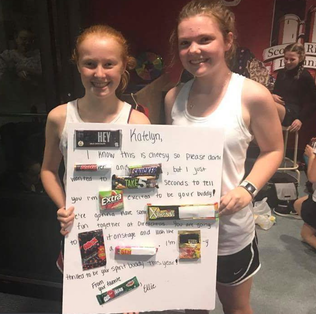 Looking for: peer mentoring opportunities? “I think Irish Step Dancing has been the first time [my dancer] has really felt challenged. But because she enjoys it so much and because of the guidance from the older girls…and of course from Miss Courtney’s teaching and motivation, she continues to try even when she gets so upset that she is not getting a step the first time around.”—Andrea Looking for: a unique, year-round activity? “Go for it!!! Some of the reasons I love it are because it is a year-round outlet for my daughter (and her dance mates.) She does not have to wait a whole year for one recital. She has competitions in the fall, performances throughout the winter and early spring, more competitions in the spring and summer, camp and other regular opportunities to dance, hone skills, perform, and become close with her friends.”—Siobhan Looking for: musical appreciation? “[Irish dance’s] upbeat cadence and structure definitely appeal to [my dancer] more than ballet or jazz dance. And as a musical family with 3 violin players, we love hearing the beautiful reels and jigs!”—Becca 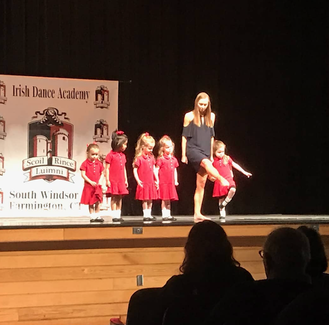 Looking for: a talented staff? “[We were] looking for a focused experience that would allow her to continue to advance competitively. Working with Courtney, and now with the addition of Christian and Bailey, [my daughter] has continued to improve as a dancer…I can honestly say the time spent working with the teachers at SRL and the friendships she has forged with other dancers are by far the best things that have happened to her.”—Laura Looking for: community and support? “[Our dancers] have learned how to set long term goals and create plans to achieve them, time management and how to take corrections, the importance community and volunteerism, these are just a few.”—Ken & Dana “I’m amazed at the choreography [my dancer] memorizes. I was so proud that she quickly gained the confidence to participate in a public performance and also do her first feis. I enjoyed watching her teach a dance to some younger Girl Scouts at one of our meetings last year, and I love that she has volunteered to help out at SRL classes with younger children—it’s all been a great growing experience for her in many ways.”—Becca Looking for: a happy kid? “Give it a whirl! Just be aware that anything hanging on your walls will be off kilter from your student constantly jumping and kicking down the hallways. 😉”—Becca 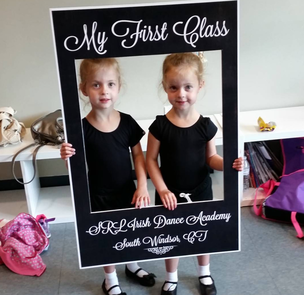 Looking for: a way to try things without commitment? “[Our dancer] quit soccer, basketball, ballet, tap, AND jazz! We were just hoping something would stick. Courtney offered a week-long mini-camp that gave [our dancer] a chance to try it out before committing to anything long-term.”—Ken & Dana If you’re looking for it for your dancer, SRL has it! While classes run on a school year schedule from September to June, we have a special offer to let new dancers get a taste before they sign up in the fall! SRL’s Intro to Irish Dance Summer Camp sign-ups are now open for new dancers 2-12, with an August session available at work-friendly drop off times for parents. Learn more about the program here, or feel free to reach out to our Office Manager, Devon, at 860-385-1107 or shoot her an email at [email protected]. She’s happy to help! This post is part of a series. Take a look at our last 411 post, all about our Tiny Jig program, here. Also: check out the blog every Monday and Thursday for more posts about Irish history, dance culture, community news, and spotlights on our dancers, staff, and families—among other fun projects! And don’t forget to dance along with us on both Facebook and Instagram. Dance in Irish Mythology, Part 2 Who is the King of the Faeries? Any Irish dancer knows what we’re talking about, and everyone else thinks we sound like we’re about to tell a bedtime story, so we’ll clue everyone in: King of the Faeries is one of Irish dance’s 38 traditional set dances. Traditional set dances are named for the music they’re set to (i.e. the trad set “Blackbird” is set to music titled “Blackbird”) and are unique from solo dances as they each have a relatively consistent set of choreography (though each school has its own, slight variation.) While dancers in the lower grades perform these trad sets at a fast-paced tempo, Champion dancers perform at a significantly slower pace to better show off their control and technique. It’s believed that the trad set dance, “King of the Faeries” stems from a Scottish, Jacobite song titled “Bonny Charlie” (after Charles Edward Stewart, the “Rebel Prince” who attempted to reclaim his throne after his father was exiled) and also ironically made the rounds in the 1700s as “King William of Orange” and “Briton’s Glory” on English soil. Even in its original publication as a trad set in 1840 in Old Irish Folk Music and Songs did it have a different title—the long and baffling “Your Old Wig is the Love of My Heart.” By 1927 it had evolved in the more understandable title “The Lonesome Wedding,” and as late as the 1950s it was popularized in American-Irish communities as “Scollay’s Reel” after a Shetland fiddler of the same name. However, the Irish dance has long known it as “King of the Faeries” and lore evolved around the tune—it’s said to be a summoning song and that if played three times at a feis, the King will appear! But the question remains…which faerie king will answer the call? Give it a listen here or here and let it play in the background while you read about the possibilities. We have quite a few options…let’s investigate some of the most interesting ones! Our first contender is Finvarra (generally pronounced phonetically these days, meaning “fair-haired,”) King of the Daoine Sídhe (descedents of the god-like Tuatha Dé Danann,) and called “King of the Faeries of Connacht.” The best comparison to more familiar mythology would paint him as a Hades character—he is also considered the King of the Dead, is generous with favors to those who please him…and abducts the occasional mortal woman. We’re unsure what his beautiful Fae queen, Una/Oona, has to say about that! Their home is said to be Knockmaa in Co. Galway, and Finvarra is believed to be responsible for negotiating with the invading Milesians to save his people—though his peace treaty did force them to stay in the Otherworld, underground. This particular King of the Faeries is the reason no one wants to disturb a Fae mound in Ireland, as it’s rumored that under his leadership the Sídhe built many beautiful cities in their new home—don’t want to disturb them! Next we have Ailill (pronounced all-yill, meaning “beauty” or “elf,”)—more of a King Consort than a king in his own right, as he was chosen by Queen Maebh (i.e. Maeve, most likely the inspiration for the bane of all ) to rule beside her because he was “a man without meanness, fear, or jealousy, a match for [her] own greatness.” (Though he had to pay his own dowry for the honor of becoming the Milesian Faerie King of Leinster, despite also having claims to the Connacht throne.) Ailill is usually depicted as an extremely tall man with a ruddy complexion and a gold diadem. The full story of the couple after they initially fell in love is one of jealousy and sadness, but you can learn more about it if you wish here. We could also consider lubdan (pronounced as it looks, meaning “leprechaun,”) who’s probably more of your idea of a faerie than any of the others. lubdan was the Faerie King of Ulster and the “Wee Folk” (aka the Faylinn) with his Queen, Bebo, and is best known for his boastful nature and diminutive size (a common trait among the Faylinn.) His best known story was his attempt to prove his bravery and worth by stealing some of the giants’ (aka the average-sized inhabitants of Ulster) porridge. The attempt failed and to escape his captors, lubdan had to relinquish his prized possession—enchanted shoes that allowed the wearer to walk on water. Read another tale about his exploits here. And lastly: Midhir (pronounced roughly like mi-dear, meaning “to judge or measure”)—son of Dagda, a member of the Tuatha Dé Danann, though Midhir continued to live aboveground (in current day Co. Longford) after the Tuatha were defeated by the Milesians. Though Midhir is often credited as the creator of all the rivers and lakes that keep the Irish countryside so green, he’s more often referred to as a ruler than a god-like figure. He’s best known for what the Irish do best--a tragic love story that echoes Zeus and Hera’s relationship in Greek mythology. Midhir was quite the ladies’ man, though he was married to his Queen, Fúamach. There are many stories of Fuamach turning the faerie Midhir most favored—Étain—in to various creatures (usually something that flies, as Midhir is associated with birds) to punish her husband.
Kingship might not generally be a democracy by definition, but we’re American over here…who’s got your vote? Let us know in the comments! This post is part of a series. Read our last folklore post, a general overview of the Fae's love of dance, here. Check out the blog every Monday and Thursday for more posts about Irish history, dance culture, community news, and spotlights on our dancers, staff, and families—among other fun projects! And don’t forget to dance along with us on both Facebook and Instagram. 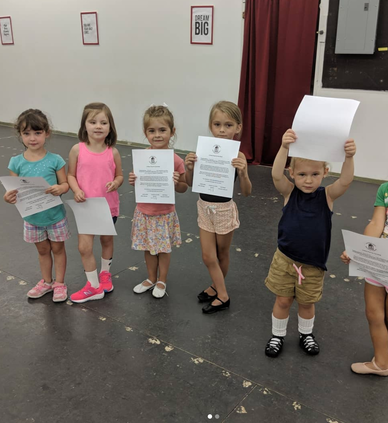 If you can walk, you can dance! Think your preschooler is too young to start dance? Think again! SRL Irish Dance Academy is proud to offer the Jump’n Jig program for our littlest dancers, aged 2 to 5! Split into two age groups (2-3 Tiny Jig and 4-5 Pre-Beginner,) this program was designed by early-childhood expert and ADCRG, Fiona Holmes. Classes start with helping our newest dancers learn how to act and engage within a dance class and move on to developing motor skills and musicality (all while making sure there’s plenty of fun in the meantime!) And with each class starting with a friendly welcome where they can bring along their favorite stuffed friend from home, SRL’s adoption of the Jump’n Jig program has helped get even the most reticent new dancer into the studio! There’s plenty of benefits to starting your child in Irish dance (and starting them early!) and both our Tiny Jig and Pre-Beginner classes cover all the bases: safe social interactions with peers, instructors, and student mentors, working on not just foundational dance skills, but listening skills, and a way to grow a sense of personhood and independence. Beyond that are the physical benefits! We utilize two movement stations—circle time for direct interaction and a “track” across the room to practice skills solo—to work on single leg balancing (adding accessory movements gradually,) leg and foot strength, foot placement for Irish dance, moving on or around markers and targets, and concepts like right/left and front/back. These skills form a strong base for all forms of movement (think about football players taking ballet!) and many Tiny Jiggers move on through the levels and become life-long Irish dancers! 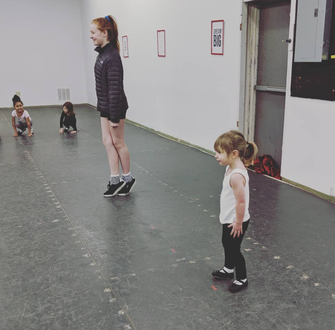 Irish dance has a long and rich tradition and history behind it, but you don’t need to have Irish heritage to be an Irish dancer. While the steps and the music are part of Ireland’s cultural heritage, Irish dance has become a global community—and SRL is a tight-knit and supportive community within that larger sphere. In this encouraging environment, dancers are exposed to a culture beyond their own while they develop a strong sense of musicality and rhythm—learning to actively listen to the music, find the beat by clapping, and utilizing props so they can dance with the music instead of to the music (the hardest thing to teach a dancer!) A successful SRL dancer isn’t just strong on technique—we see success as a confident, happy, and comfortable dancer! While classes run on a school year schedule from September to June (with every class available as in-person, online, or a hybrid model,) we have a special offer to let new dancers get a taste before they sign up in the fall! SRL’s Intro to Irish Dance Summer Camp sign-ups are now open and is a perfect way to judge your littlest dancer’s interest before committing more fully. With two sessions available at work-friendly drop off times for parents, your session also includes discounts on registration and your first four weeks of classes come September. Learn more about the program here, or feel free to reach out to our Office Manager, Devon, at 860-385-1107 or shoot her an email at [email protected]. She’s happy to help! This post is part of a series. Take a look at our last 411 post, all about our studio, here. Also: check out the blog every Monday and Thursday for more posts about Irish history, dance culture, community news, and spotlights on our dancers, staff, and families—among other fun projects! And don’t forget to dance along with us on both Facebook and Instagram. Dance in Irish Mythology, Part 1 Faeries Love to Dance Irish dance is unique from other popular dance styles—jazz, tap, modern—not just in technique, but in its deep-rooted ties to ancient Irish culture even as this artistic sport evolves into the present day. Learning and performing Irish dance isn’t limited to the Irish, but each step that’s taught stems from a place before Ireland’s written history, times full of magic and heroes and monsters that we can only call mythologic. While there’s not precisely proof of faeries (but don’t tell the Irish that--many still at least passively believe in the Sídhe, pronounced shee) and the people who lived beside them, one part of the stories is clear: faeries love to dance. (Want a quick overview of some of the basics of Irish mythology? Check out our post about the Tuatha Dé Danann, the ancient Irish gods, here.) Any dancers knows that while dance is hard work and constant practice, there are moments where dancing can make you feel as if you’ve been transported to another world. Nowhere is this clearer than in Irish mythology, where tales of beautiful, unearthly music and dance partners so enchanting one can’t help but keep dancing, abound. As Greek mythology has the pomegranate seeds (and almost every known mythology has a correlation—Japanese, Norse, even Christianity) that trap Persephone in the Underworld, Irish mythology has dance. The sense of timelessness, peace, and joy we feel when we dance evokes the feeling the ancient Irish associated with the perfection of Tír na nÓg (the “Land of Youth” or the “Otherworld”)—a place where time is frozen and no one grows old. To dance with the Fae in their underground realm is dangerous game in Ireland—you may emerge unscathed, but you may emerge days, weeks, years later…or not at all. Time is a tricky thing in the Otherworld, after all! But, dancing for the Sídhe is more than a deception—it’s their most beloved activity! Yeats, world renown poet perhaps less known for his extensive work recording and examining Irish mythology, features dance heavily in his poems that focus on the legends of the Fae and all the associated creatures. For example, Leprechauns (read a fuller description of these mischievous troublemakers here) are typically excellent musicians and cobblers, with Yeats explaining: “Because of their love of dancing, they (the Fae) will always need shoes.” It was thought that a good dancer or musician was favored by the Fae with their blessing, but Yeats’s take uses dance and tales of the Sídhe as an exploration of idealistic, national pride as the world was changing around him. The constancy of national identity and tradition the Irish have fought long and hard to protect (dance included) exists perpetually and perfectly in the Land of Youth, no matter what skirmishes may be being fought above ground. But this is all fairytales and stories, right? Well, most stories we tell children—to comfort or warn them—do have a root in reality somewhere. The concept of dance as an inseparable part of Irish mythology and culture may be due to the importance of ritualistic movement in Druidic times. Historians agree that pagan priests most likely practiced a ceremonial dance of sorts called cor deiseal (pronounced kor dy-ash-al,) from the Irish deis for “right hand” and deas for “South.” As the Druids were sun-worshippers (learn more here!), these dances were performed in complicated clockwise patterns to follow the sun’s path. These rites are considered by many to be the earliest form of Irish dance, and it’s no wonder the storytellers of Irish mythology picked up on these culturally important ceremonies and wove them in to their own tales. With the first feiseanna in Ireland believed to be a literally three millennia ago at Tara—a site known for its ancient ruins that align with the sun on Samhain, featured in many an Irish legend—it’s clear that dance has been inextricably linked with Ireland’s culture and beliefs since day one. Even modern Ireland isn’t empty of this more ritualized form of Irish dance today! Visit any holy sites or wells in Ireland (popular on festival days like Beltane or Lughnasa, and many other religious holidays, both pagan and Christian) and you may see regular citizens walking clockwise around the site as they tie clooties to trees. Paganism has also seen a resurgence in Ireland in recent days, with huge festivals being thrown on ancient, holy sites that include music, dance, and celebrations so raucous one wonders if they’ll bring the Sídhe from the Otherworld to join in. How could they resist?
Tune in next week where we continue to explore the links between Irish mythology and dance by asking one, very important question: who exactly is the king of the faeries? This post is part of a series. Read our last mythology post, all about Springtime Old Wives’ Tales, here. Check out the blog every Monday and Thursday for more posts about Irish history, dance culture, community news, and spotlights on our dancers, staff, and families—among other fun projects! And don’t forget to dance along with us on both Facebook and Instagram. 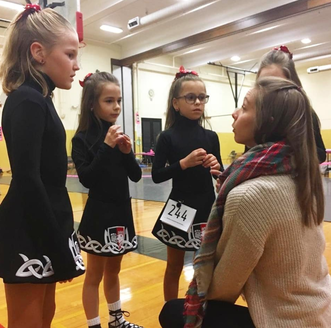 Miss Courtney encouraging dancers before a performance. Miss Courtney encouraging dancers before a performance. Tradition. Passion. Dedication. Welcome to Scoil Rince Luimni, also known as SRL Irish Dance Academy! We’re a small, independently-owned Irish dance studio located in South Windsor, Connecticut and we’re so happy you’re here. A little about us: SRL was founded in 2014 by Courtney Jay, TCRG after she finished her BA in Irish Music and Dance at the University of Limerick. (In fact, that’s why we’re SRL—in Irish Gaelic Scoil (scull) is school, Rince (ring-ka) is dance, and Luimni (lim-nee) is Limerick!) Miss Courtney, as the dancers call her, has been an Irish dancer her whole life and has been teaching and mentoring younger dancers since she was 13. During her time in Limerick, Courtney trained at the Fleming-Ball School of Irish Dance, where she danced her way to 2 solo world medals, regional titles in solo and team championships, and top 10 at every international major competition. Before leaving Ireland, Courtney was certified by the CLRG (the largest and oldest governing body of Irish dance in the world) and then came home to Connecticut to create SRL! 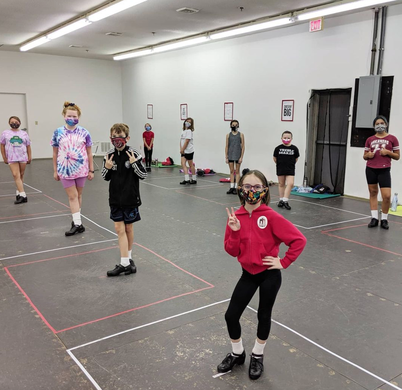 Hard shoe class! Hard shoe class! 7 years later and SRL is a tight-knit community that instructs in the storied tradition of Irish dance for those as young as 2-years-old (check out Tiny Jig to learn more!) into adulthood (check out SRL After Dark to learn more!) We take this traditional art form and honor the artistic components while taking a modern approach to what has become a highly athletic discipline. We train our dancers to identify and work towards their own, personal goals—whether that be recreation, casual performances, or the competitive track. Our structured environment, supported by our knowledgeable instructors, focuses on the whole dancer: technique and whole-body conditioning to be sure, but also the promotion of healthy life skills (such as setting and achieving goals, teamwork, focus, and dedication.) In line with that, SRL offers mentoring opportunities at every turn—from class helpers to buddies at dancers’ first competitions and performances—and cultivates a spirit of support and community that’s really what Irish dance is all about! Our small, but passionate staff is ready to help guide and encourage your dancer—whether they be just starting out or qualifying for Worlds—through structured lessons that optimize their opportunities to grow both as dancers and as people. While Irish dance has a long tradition (read more about its origins here!) and strong ties to Ireland’s national identity, you don’t need to be Irish to do Irish dance. As the Irish diaspora has spread across the world, Irish dance has become more than a traditional art form (though it retains those roots and music)—it’s a global community. All you need to join in is passion, dedication, and someone to teach you—and we’d love to help out! 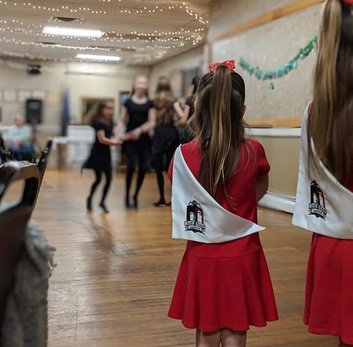 SRL is registered with the CLRG, the Irish Dance Teachers of North America, and the New England Irish Dance Teachers. While classes run on a school year schedule from September to June (with every class available as in-person, online, or a hybrid model,) we have a special offer to let new dancers get a taste before they sign up in the fall! SRL’s Intro to Irish Dance Summer Camp sign-ups are now open for new dancers 2-12, with two sessions available at work-friendly drop off times for parents. Learn more about the program here, or feel free to reach out to our Office Manager, Devon, at 860-385-1107 or shoot her an email at [email protected]. She’s happy to help! This post is part of a series. Take a look at our last 411 post, all about the benefits of Irish dance, here. Also: check out the blog every Monday and Thursday for more posts about Irish history, dance culture, community news, and spotlights on our dancers, staff, and families—among other fun projects! And don’t forget to dance along with us on both Facebook and Instagram. Volume VIII Part 2 What’s the craic? We’re back again with some of the most confusing Irish slang terms we could find! (Missed part 1? Catch up here!) Note: Just like in America, all slang presented below is regional. And just like America, it's difficult to figure out exactly where a singular word originates from when you're not living there. For this reason, regional information hasn't been included with this post. Ninety As you may remember from Part 1, the term craic (crack) essentially means fun, and ninety is a way to measure said craic. However, it isn’t a sliding scale. If the craic is great, it’s ninety—but it’s never just eighty or any other number. Believed to be popularized by a song (recorded by multiple Irish artists) in the 1960s called “The Craic was Ninety in the Isle of Man.” Story Horse? Abbreviated from “What’s the story, horse?” , it’s a quick way to ask someone “What’s up?” or, more literally: “What’s the story?” As one explanation put it: “Horse refers to a friend, not an actual horse.” Good to know the Irish aren’t expecting every equine they see to be Mr. Ed. Banjaxed Essentially, broken beyond repair, just—really, very messed up. This term popped up in the 1930s with no real known origin. (Though some guess it comes from the Scottish slang banjoed, which means to be hit as hard as possible. Not too far off—we’d say wrecked for both!) You made a hames of it This one’s probably easy to guess: you messed it up. Usually used in a relatively light-hearted manner (think of a dad throwing up his hands and sighing before fixing it himself,) it stems from Ireland’s long-standing agrarian culture. Hames is literally a curved piece of iron or wood on the collar of a draught horse—so if you’ve put it on incorrectly, you’ve made a hames of it. Wean Pronounced wayne, any mom out there can guess what this means! While the word wean makes our American brains think about weaning a baby, this term is used for children of many ages—and often by parents even when their kids aren’t truly weans anymore. Go for the messages/Do the messages No, it doesn’t mean checking your email, but is rather more akin to doing the shopping or more generally, errands. The term is thought to derive from the time where part of one’s errands would be checking for literal messages or packages at your centralized post office (no home delivery from Amazon Prime in those days!) The GPO, founded in England in the 1600s, was hugely influential and changed Irish culture forever by opening up the world to the inhabitants of the Emerald Isle! This post is part of a series. Check out our last Modern Irish Culture post, with some kid-friendly Irish movie recommendations, here. Check out the blog every Monday and Thursday for more posts about Irish history, dance culture, community news, and spotlights on our dancers, staff, and families—among other fun projects! And don’t forget to dance along with us on both Facebook and Instagram. Quare This is essentially the word queer (as in odd) with an Irish accent (i.e. kware,) but has come to mean it in a positive way: as in very or wonderful, great, etc. It can be “it’s quare windy today,” but you could also describe your spouse as “the quare one.” It was perhaps popularized by Irish playwright Brendan Behan’s The Quare Fellow (1954,) but was definitely common parlance before then! Minerals There’s so many names for this item, it’s not surprising the Irish have their own. We might say: soda, soft drink, coke, or the most controversial: pop. Essentially: any sugary, fizzy, non-alcoholic drink! (Older generations tend to associate this term with 7UP specifically—so it’s safest to be a little more specific.) This term has most likely held on as Ireland is thought to be the birthplace of soda’s predecessor, mineral water, as early as the 1700s! Dooter One of the sillier sounding slang terms (there’s no way your kids aren’t going to giggle if you teach them this one,) this simply means a short (or, as the Irish would say, wee) walk. Nationals Veteran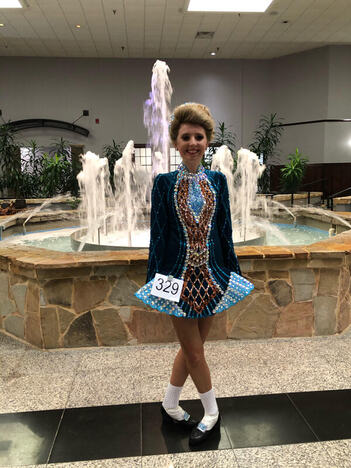 Name: Emily M. Age: 17 Congratulations on qualifying for Nationals! It’s been so long since the last major in November of 2019—what are you most looking forward to this year? I am most looking forward to dancing my absolute best this year, working to incorporate judges feedback with the hopes of improving placement or not getting the same comments each time. Competing with my friends is really important to me as we all support each other as one big extended family. No matter the school, level or the placement at the end of the day, we are always there to support and cheer each other on. I have missed that! You must have changed so much since November 2019! What have you learned over the last year and a half about yourself as a dancer? Since November 2019, I've learned more about my style of dance and complicated choreography that would suit me. I think it's important to take a step back and reevaluate yourself and your dancing to know what you want to achieve in your career. Doing this with the help of Courtney, Christian and Bailey has helped me become more confident in my dances and have created a structured mindset for my goals at majors. What past National competition was your favorite? Why? Nationals 2019 in Vancouver would be my favorite because it was the first year I was eligible to dance. I was so incredibly proud and honored that I was able to go. I had always dreamed of dancing at Nationals and being part of that elite group and it finally came true!! What have you missed the most about competing? (And what have you definitely NOT missed about competing?) I miss competing so much!! My favorite parts of competing would have to be seeing my friends from other schools, being able to showcase what I've worked on and getting judges marks and comments on how to improve. I find the judges marks and teachers' feedback helpful as they have a different perspective on my dances and ways I can improve myself. What’s your proudest dance achievement so far? Any future dance goals you’re setting for yourself? My proudest dance achievement is getting into Open Championships and having the opportunity to go to Nationals. I had always wanted to reach the highest level of irish dance but I wouldn't have gotten this far without hard work, teachers, friends and family. Dancing for fifteen years (irish dancing for twelve!) has taught me the importance of making friends that will last forever and enjoying the moment. Sharing an irish dance journey with my friends is the best thing I could've asked for. In the future I'd love to get the opportunity to compete at Worlds!! What’s your favorite dance to compete in? Which do you think is your strongest? My favorite dance to compete in would be slip jig! I love the elegant and balletic choreography and I love the music too! My strongest dances have always been soft shoe dances just because the energy and flow of each movement suits my dance style. Growing up watching Lord of the Dance and Riverdance had always interested me as the “good girls” would mainly do soft shoe and more specifically slip jigs. Have you ever visited Phoenix before? Any plans while you’re there beyond dancing? I have never visited Phoenix before and I’m looking forward to spending some time there! My Mom and I are planning on making a road trip out of it and going to Las Vegas, San Diego and Los Angeles along the way! As someone who’s been to Nationals before, what’s your advice to dancers competing there for the first time? My first Nationals was nerve wracking as I didn't know what to expect and became overwhelmed. So my advice to those who are going for their first time this year is to just have fun and remember that you earned a spot to be there. When I first went I put so much unnecessary stress on myself and believed that I didn't belong. If you go into it with a good attitude, belief in your teachers and have a good mindset, you're ready to reach success. Remember to enjoy your moment and do YOUR personal best. The rest is out of your hands. ☘️ This post is part of a series. Take a look at our last Nationals Spotlight, with Gabby G. and Kellyann, here. Also: check out the blog every Monday and Thursday for more posts about Irish history, dance culture, community news, and spotlights on our dancers, staff, and families—among other fun projects! And don’t forget to dance along with us on both Facebook and Instagram |
SRL NewsFind all of our latest news on our Scoil Rince Luimni Facebook page! Categories
All
Archives
August 2022
|
 RSS Feed
RSS Feed